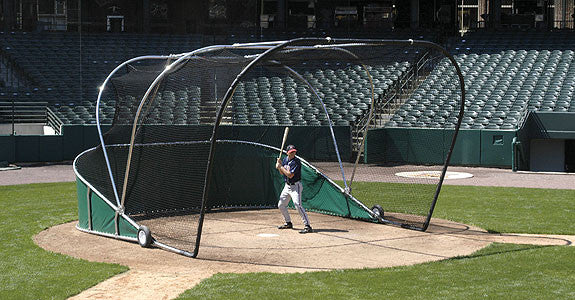as we get started with the baseball and softball seasons were going to have this question come up again I was at a game the other day for my grandson, but it doesn't make any difference whether it's peewee baseball or major-league the rules are exactly the same. There are three or four cases that come up every year that coaches, parents, and players don't know what makes a ball fair, what makes a ball foul.
So I'm going to break them down in the simplest of terms:
1. the first and foremost decision to be made on whether a ball is fair or foul is where is the ball located when it is touched by a player. with a player touches it it is where the ball is located that makes it fair or foul, where the player is located makes no difference at all. The most common is that a player at third or first is still it fair territory reaches across the foul line to field the ball and touches the ball while it's over foul territory that makes it foul.
2. A ball that hits off of home plate is neither fair nor file until somebody touches it.
3. the one that seems a little contrary is the one that where the ball hits in fair territory and then lands in foul territory and the umpire calls it fair. Here's the reason why a ball that hits in front of first or third in fair territory then passes over first or third or inside first or third then lands in foul territory is a fair ball because it passed over first or third after it hit the ground in front of those two bases. If it lands for the first time passed first or third in where it lands is determined fair fell.
4. The line is considered in fair territory, if it just touches any part of the line that is a fair ball.
5. One extremely rare situation, I've only seen it twice in 50 years of umpiring but it's there so I say it if a ball hits the pitching rubber and then rebounds into foul territory before it is touched by a player then it is a foul ball, because it never passed first or third.
One last case for you to think about that you seen all the time it really illustrates what I've said above that a player is underneath a pop-up, to the infield, they miss it completely and it lands on the ground and you hear the coaches say let it go foul, let it go foul because they want the ball to land and be touched in foul territory.. Or the reverse of it a ball is rolling down the line from a queue shot and the coaches tell the players touch it touch it in foul territory so that is ruled a foul ball.
Where the ball is been touched that's what makes it fair or foul in front of the bases,, behind first or third it's where it lands.
Arnald Swift umpire 50 years plus (at all levels) coaching 40 years plus
Runner on third touches home before batter is tagged out by first baseman does the run count?
Assuming that the batter has not yet touched first base then no, the run does not score since a run cannot score on a play where the batter-runner is put out before touching first base. However, if the runner had already touched first base and then was tagged out attempting to advance to second then the run does score because the runner from third scored before this happened
Running Lane and Interference
The batter is out if, in running to first base, the batter-runner is hit by a throw while running outside of the 3 foot running lane, or interferes with the fielder taking the throw at first base. He could be called out even if he is not hit by the throw, if the umpire judges that by being outside the lane he interfered with the fielder’s attempt to field the throw. There must be a throw before interference can be called and the throw must be a quality throw. Rule 6.05(k).
A runner is not free from interference while in the lane, nor automatically guilty when out of the lane. If he is out of the lane he is in serious jeopardy of being called for interference, but it is not automatic, unless he is hit by the throw, or commits an intentional act of interference. The rule states that he is out when out of the lane AND causes interference with the fielder taking the throw. If he is out of the lane and is hit by the throw, that is always interference. If he is in the lane he could still cause interference, but it would have to be something obviously intentional (like grabbing the fielder's arm or glove, or deliberately touching a thrown ball). If the catcher does not make a throw because the runner is outside the lane, this is not interference. Interference with a thrown ball must be intentional. Such as, deliberately making contact with it. Or in this case if the runner is hit by the throw while outside the lane. The lines marking the lane are part of that "lane," but the runner must have both feet within the lane or on the lines marking the lane, to be judged as "in" the lane. Rule 7.09(k) casebook, N.A.P.B.L 4.14.
If the runner is hit by the throw or a collision occurs on his last step before touching the base; generally interference is not called. The runner has to step into fair territory to touch the base that is in fair territory.
These are all false but players, coaches, parents and fans think they are always true
- 21. The runner is always safe when hit by a batted ball while touching a base.
- 22. A runner may not steal on a foul-tip.
- 23. It is a force out when a runner is called out for not tagging up on a fly ball.
- 24. An appeal on a runner who missed a base cannot be a force out.
- 25. A runner is out if he runs out of the baseline to avoid a fielder who is fielding a batted ball.
- 26. Runners may not advance when an infield fly is called.
- 27. No run can score when a runner is called out for the third out for not tagging up.
- 28. A pitch that bounces to the plate cannot be hit.
- 29. The batter does not get first base if hit by a pitch after it bounces.
- 30. If a fielder holds a fly ball for 2 seconds it's a catch.
Reasons and Rule
21. The bases are in fair territory. A runner is out when hit by a fair batted ball, except an infield-fly.
Rules: 5.09(f), 7.08(f) Official Baseball Rules
22. There is nothing foul about a foul-tip. If the ball nicks the bat and goes to the catcher's glove and is caught, this is a foul-tip by definition. A foul-tip is a strike and the ball is alive. It is the same as a swing-and-miss. If the ball is not caught, it is a foul ball.
Rules: 2.00 FOUL-TIP, STRIKE Official Baseball Rules
23. A force play is when a runner is forced to advance because the batter became a runner. When the batter is out on a caught fly, all forces are removed. An out on an a failure to tag-up, is NOT a force out. Any runs that cross the plate before this out will count.
Rules: 2.00 FORCE PLAY, 4.09 Official Baseball Rules
24. A runner must touch all the bases. If the runner misses a base to which he was forced because the batter became a runner and is put out before touching that base, the out is still a force play. If this is the third out, no runs may score. The base can be touched or the runner can be touched, either way it's a force out.
Rules: 2.00 FORCE PLAY, TAG, 7.08(e), 7.10(b) Official Baseball Rules
25. The runner MUST avoid a fielder attempting to field a BATTED ball. A runner is out for running out of the baseline, only when attempting to avoid a tag.
Rules: 7.08(a), 7.09(L) Official Baseball Rules
26. An Infield-fly is no different than any other fly ball in regard to the runners. The only difference is that they are never forced to advance because the batter is out whether the ball is caught or not.
Rules: 2.00 INFIELD-FLY, 6.05(e), 7.10(a) Official Baseball Rules
27. Yes it can. This is not a force play. A force play is when a runner is forced to advance because the batter became a runner. When the batter is out on a caught fly, all forces are removed. An out on an a failure to tag-up, is NOT a force out. Any runs that cross the plate before this out will count.
Rules: 2.00 FORCE PLAY, 4.09, 7.10(a) Official Baseball Rules
28. A pitch is a ball delivered to the batter by the pitcher. It doesn't matter how it gets to the batter. The batter may hit any pitch that is thrown.
Rule: 2.00 PITCH. (If the ball does not cross the foul line, it is not a pitch.)
29. A pitch is a ball delivered to the batter by the pitcher. It doesn't matter how it gets to the batter. If the batter is hit by a pitch while attempting to avoid it, he is awarded first base.
Rules: 2.00 PITCH, 6.08(b).
30. A catch is legal when the umpire judges that the fielder has COMPLETE control of the ball. The release of the ball must be voluntary and intentional
Here is a situation that really happened .
Runner on 1st base and a runner on 2nd base, 2 outs, batter has a 3-2 count on him. The pay off pitch is a half swing that I ruled a ball (no swing) the catcher argues with me and says it was a strike, I say no. Then he notices the batter/runner trotting to 1st base and tries to throw the ball to the 1st baseman but instead of getting the 1st baseman the ball hits the runner in the back of the head and the ball goes over the fence near the dugout out of play. Now the question: what do you do with the runners and why do you make that ruling.
(Think of your answer before you read below)
Ruling. It really is just like a throw from the field, which leave the field of play our goes out of play- which is 2 bases from the base the runner last possessed at the time of the throw. So the Runner on 1st and 2nd are awarded 2 bases. and the batter runner awarded 2 bases from home plate. Therefore the runner at 2nd scores, the runner at 1st to 3rd and the batter runner goes to 2nd. Granted it was confusing to the fans and the coach was not happy but they agreed that the ruling was correct and we played on.
Umpiring and Coaching
I would like to write an article about the relationship between a coach and an umpire. Having been a coach for 34 years and umpire for 21 years I feel like I have some expertise in this area.
The first and foremost thing is to realize that both of you are out there to do a job. This truly should not be an adversarial relationship though sometimes it reduces itself to that. I'm always kept in mind when I coached younger kids that the umpires themselves were just starting out and probably do not have the experience nor the expertise to handle every situation that comes up in a ballgame. They certainly don't have the maturity to handle a coach that is on them from the first pitch and about every call, nothing really good as going to come of this kind of interaction. The umpires going to become very defensive about his calls and in fact the less experience they have with coaches and situations they are very likely to eject a coach or a player over something that was really just part of the ballgame. The other possibility is the umpire will take any amount of the static from both from the coaches, players, and fans and therefore loses control of the game besides ruining it for everybody.
It is always been my opinion and experience that coaches and umpires realize why they're both out there on the field. It's not the umpire's job to make everybody happy every call this the least bit close is going to disappoint 50% of the people. H should look at the play, make a decision, then be firm in announcing it and go on with the game. You've never seen a umpire change a ball- strike or out -safe call that is just the way it is and should be. Coaches have every right to an explanation of a rule and the application of the rule; in fact that was always my rule of thumb. When I would talk to umpire as a coach the rule was I wanted the rule and application of that rule explained and wanted the application changed. The application of rules is what can be changed not the call itself. As umpire I always appreciated and gave the utmost consideration to a coach that knew what he was talking about and only complained or questioned the rule. I’ll guarantee you that you'll get more done going out there and say I need you to explain to me or why did you call it that way. If you go out there and are argumentative that's what you get an argument. I will say right now that the umpire that is worth his or her being out there will win each and every argument, that is the way it has to be that's why they're working the game.
When you are arguing with an umpire there are words that you should never use and they are not always the obvious ones such as cussing, depending on the level of the game a coach can be more vocal. But no umpire in the world likes to hear the word "you", or “cheater" in front of any statement that you may make. When I was working college or high school we discussed things very adamantly at times but the minute coach put "you" in front of his words he stood a good chance of getting tossed.
Remember the umpires are there in the game just as you and your players. To try an manipulate him is the same is trying to manipulate your players. I will agree if an umpire makes the wrong call by applying the rule incorrectly then you have every right to try to get it changed but you are creating a situation that you really don't want when you just complained about balls - strikes, safe -out.
If the batter does not pull the bat out of the strike zone while in the bunting position, it's an automatic strike.
The batter must actually make an attempt to bunt the pitch in your judgment for it to be ruled a strike. Just leaving it in the strike zone is not enough to consider it an attempt.
---------
. The batter is out if a bunted ball hits the ground and bounces back up and hits the bat while the batter is holding the bat.
If the batter is in the batter’s box when this occurs, it is simply a foul ball. If he is out of the batter’s box at this time, he is ruled out for interference.
---------
The batter is out if his foot touches the plate.
This is true if the entire foot is out of the batter’s box when it touches the plate. Having the foot touch the plate and the batter’s box is not considered out of the batter’s box.
---------
The batter-runner is always out if he runs outside the running lane after a bunted ball.
The batter-runner is only out if he is outside the running lane when he causes the fielder at 1st base to have trouble receiving the throw or he is hit with the throw while he is outside of the running lane.
---------
A runner is out if he slaps hands or high-fives other players, after a homerun is hit over the fence.
In high school and professional baseball this is not true. In NCAA baseball, the 1st time this occurs, it would become a team warning and the next time it occurs it would be an ejection but it is never an out.
---------
Tie goes to the runner.
In baseball, there are no ties. The rule does state that if the ball beats the runner, the runner is out. If the runner beats the ball, he is safe. So, if it is a tie, it really goes to the defense and not the offense.
--------------------
The runner gets the base he's going to, plus one on a ball thrown out-of-play.
The runner gets 2 bases usually from the time of the pitch and other times he would get 2 bases from the time of the throw. There are no one plus one awards. There are only 1, 2, 3 & 4 base awards.
---------
Anytime a coach touches a runner, the runner is out.
The coach cannot touch a runner to help him advance or return to a base during a live ball. However, on a home run out of the park, the coach may touch the runner.
---------
Runners may never run the bases in reverse order.
Runners may not run bases in reverse order to make a travesty of the game. There are many times when the runner has to run in reverse order if the fly ball is caught or sometimes they run the bases in reverse order because they are confused to what took place.
---------
The runner must always slide when the play is close.
There is never a time a runner must slide but there are times if he does not slide, he will be called out for interference. He also has the option of giving himself up, trying to avoid the tag by going around it, reversing directions, etc.
BASEBALL RULES MYTHS
1. The hands are considered part of the bat.
No baby was ever born with a bat in his hands. Therefore, as an umpire you must judge if the ball hit the bat or the batter first.- Unless batter swings then it is a strike-------
2. The batter-runner must turn to his right after over-running first base.
The batter-runner must make an attempt to advance toward 2nd base in order for him to be liable to be tagged out.-------
3. If the batter breaks his wrists when swinging, it's a strike.
This could be one of the criterion in which you judge if he swung or not. The best statement you can make when asked about a check swing is that he attempted or did not attempt to swing at the pitch. Other criterion might be that the barrel of the bat goes past the middle of the batter’s body or not. One other criterion might be that the bat crossed the middle of the plate.-------
4. If a batted ball hits the plate first it's a foul ball.
To rule it foul it must have come to rest in foul territory or be touched in foul territory.-------
5. The batter cannot be called out for interference if he is in the batter's box.
The batter’s actions are what causes interference and not necessarily where he is. In the batter’s box, if he does nothing out of the ordinary, it is more difficult to commit batter interference but it is possible.-------
6. The ball is dead on a foul-tip.
The ball is always live on a foul tip. Therefore runners may be put out or advance at their own risk on a foul tip.-------
7. The batter may not switch batter's boxes after two strikes.
The batter may switch batter’s boxes at any time while the ball is dead.-------
8. The batter who batted out of order is the person declared out.
The batter that is supposed to bat is the one that is declared out.-------
9. The batter may not overrun first base when he gets a base-on-balls.
This is true in National Federation Rules but it is not true in NCAA or professional rules. -------
10. The batter is out if he starts for the dugout before going to first after a dropped third strike.
The batter is out if he leaves the dirt circle around the plate area after a dropped 3rd strike unless he is making an attempt to reach 1st base.
In baseball can you tag out a guy without the ball being in the mitt?
When a fielder tags a runner he must tag him with the ball or with his glove with the ball in it. However, if while making the tag the fielder does not have complete control of the ball then it shall be as if the fielder didn't tag the runner.
A situation in a ballgame this past week about what constitutes a fair or foul ball. There's one overriding rule in baseball the ball is what is fair or foul not player. The original question was the ball hit home plate and the umpire called it fair, correctly, but the coach thought it should be foul because it hit home plate NO, what makes it fair foul is one of the following criteria:
1. If the ball hits the ground and then passes over or inside first or third then it doesn't matter where it lands past the base it is a fair ball.
2. If the ball is in front of first or third base then it's where the ball is touched NOT, the player position of the ball is what determines fair or foul not player.
3. What are the common ones is that the batted ball is hit into foul territory then comes back into their territory, too many times players or coaches or fans think that because the ball landed in foul territory then got into fair territory that it still foul ball. Again it's where it's touched in front of first or third base. We never think about the ball that hit fair and then rolls foul everyone call that a foul ball, but the truth is the exact reverse of it is also correct it can land in foul territory and roll into fair territory (as long as it is in front of first or third) and it will still be a fair ball. Just something they came up this weekend that's always been true.










